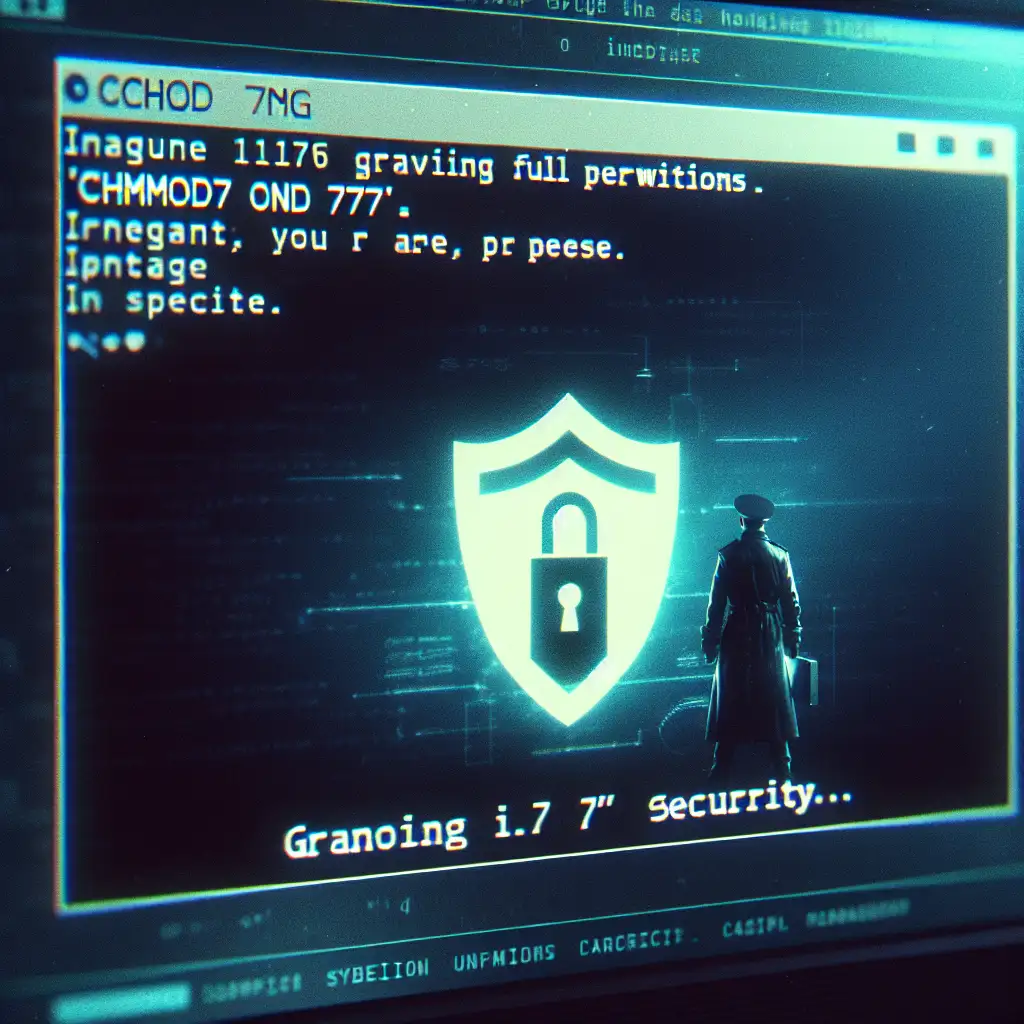Mastering chmod 777: When and How to Safely Assign All Permissions to Files
chmod 777 filename — nearly every Linux administrator encounters this at some stage. Is it a blunt tool? Yes. Is it sometimes necessary? Also yes, but rarely outside narrowly defined scenarios.
What Actually Happens With chmod 777
Calling chmod 777 file sets read (r), write (w), and execute (x) permissions for user, group, and others. Numerically:
7: read (4) + write (2) + execute (1) = all permissions.- The octal triplet covers owner, group, others — in that sequence.
For example:
ls -l example.sh
# -rwxrwxrwx 1 user group 0 Apr 1 10:00 example.sh
This permission matrix guarantees any user on the system can read, modify, and execute the target.
Real-World Contexts Requiring chmod 777
Don’t treat 777 as a default—even in development. Yet, three notable situations prompt temporary or controlled use:
-
Shared scratch spaces (e.g., /tmp, transient CI playgrounds)
You occasionally need a directory writable and accessible everyone. Default/tmpisdrwxrwxrwt(note the sticky bit, see below), but teams roll out their own for specialized jobs.mkdir /var/tmp/team_shared chmod 777 /var/tmp/team_sharedCaution: files dropped here are globally modifiable—there’s no audit trail.
-
Containerized development environments
For ephemeral Docker containers or Vagrant boxes with multiple users, fast-moving file ownership and group issues can stall teams. Giving blanket permissions resolves dev friction, but never move these habits to production images. -
Debugging
Permission-denied? Rapidly escalate access with:chmod 777 script.shRun the process. Once testing concludes:
chmod 750 script.sh # Owner and group onlyCritically, never leave the file world-writable/executable post-triage.
Risks: Why chmod 777 Often Backfires
Assigning all permissions to all users means:
- Unrestricted write access — data can be deleted/mutated by any local user or process.
- Executables become vectors for privilege escalation; consider
PATHhijacking if directories are mispermissioned. - On multi-tenant or public machines, privilege boundaries are easily crossed.
A sample mishap:
Mistakenly chmod 777 a web root, and attackers can upload web shells—seen repeatedly in incident response.
Note: Many system directories (e.g., /var/www/) require only group write; never world-write on production.
Responsible Alternatives and Nuances
Fine-tune permissions to actual requirements. Instead of 777:
- Use
770or775to grant group access. - Shift ownership (
chown user:group file) for collaborative workflows. - Use ACLs (
setfacl) for edge cases where classic Unix modes are too rigid.
Sticky bit (t):
On world-writable dirs, set the sticky bit to prevent users from deleting each other’s files:
chmod 1777 /var/tmp/shared_data
Files can be removed only by their owners—even though the directory is still globally writable.
Table: Common Permission Schemes
| Mode | Who can do what | Example use |
|---|---|---|
| 755 | Owner: all, Group/Others: rx | Binaries/scripts in /usr/bin |
| 770 | Owner/Group: all, Others: - | Team collaboration folders |
| 700 | Owner: all, no access for others | SSH keys, secrets |
| 1777 | Everyone can write, sticky restricts delete | /tmp |
Edge Case: Web Server Uploads
Web apps accepting user uploads often demand writable directories. Never use 777 on production. Instead:
chown www-data:www-data /var/www/app/uploads
chmod 770 /var/www/app/uploads
Adjust group membership for deployment/batch jobs as needed.
Known issue:
Frameworks like Drupal or WordPress sometimes nag about permissions during upgrades. Resist the urge to use 777; set owner/group correctly instead.
Hands-On: Diagnosing Permission Failures
Suppose a deployment script fails:
bash: ./deploy.sh: Permission denied
First, verify with ls -l deploy.sh. If permissions are too restrictive, use:
chmod u+x deploy.sh
If group members need access:
chmod 750 deploy.sh
Only revert to chmod 777 deploy.sh momentarily if nothing else resolves it. Always restore proper permissions after.
Non-obvious Tip
Filesystem mount options (noexec, nosuid, etc.) override even 777. For example, on /tmp:
mount | grep /tmp
# /dev/sda2 on /tmp type ext4 (rw,nosuid,nodev,noexec,...)
Trying to run a script here yields:
bash: ./temp-script.sh: Permission denied
Irrespective of chmod settings.
In Practice
Blindly applying 777 permissions is a security anti-pattern, especially in environments integrating with LDAP, NFS, or containers. Understand the context, minimize risk, and document any deviation from least-privilege defaults.
If your workflow seems to demand 777 everywhere, pause: adjust group memberships, directory layouts, or automation pipelines instead.
Further reading: Advanced permission management with POSIX ACLs, setgid bits, and SELinux/AppArmor contexts—all crucial for complex or regulated environments.
